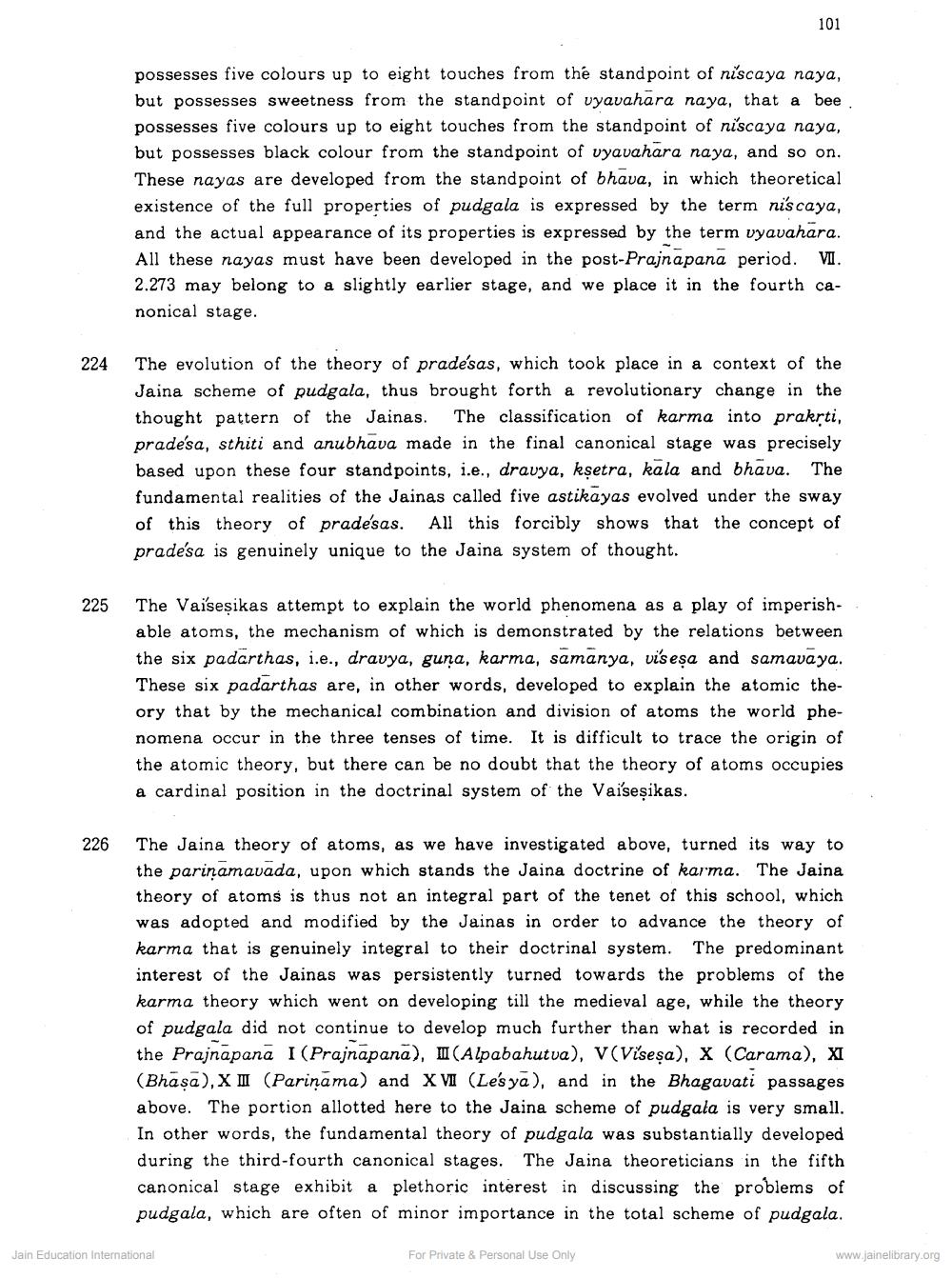________________
101
possesses five colours up to eight touches from the standpoint of niscaya naya, but possesses sweetness from the standpoint of vyavahara naya, that a bee possesses five colours up to eight touches from the standpoint of niscaya naya, but possesses black colour from the standpoint of vyavahara naya, and so on. These nayas are developed from the standpoint of bhava, in which theoretical existence of the full properties of pudgala is expressed by the term niscaya, and the actual appearance of its properties is expressed by the term vyavahara. All these nayas must have been developed in the post-Prajnapana period. VII. 2.273 may belong to a slightly earlier stage, and we place it in the fourth canonical stage.
224
The evolution of the theory of prade'sas, which took place in a context of the Jaina scheme of pudgala, thus brought forth a revolutionary change in the thought pattern of the Jainas. The classification of karma into prakrti, pradesa, sthiti and anubhava made in the final canonical stage was precisely based upon these four standpoints, i.e., drauya, kşetra, kala and bhava. The fundamental realities of the Jainas called five astikayas evolved under the sway of this theory of prade'sas. All this forcibly shows that the concept of prade'sa is genuinely unique to the Jaina system of thought.
225
The Varseșikas attempt to explain the world phenomena as a play of imperishable atoms, the mechanism of which is demonstrated by the relations between the six padarthas, i.e., dravya, guna, karma, samanya, visesa and samavaya. These six padarthas are, in other words, developed to explain the atomic theory that by the mechanical combination and division of atoms the world phenomena occur in the three tenses of time. It is difficult to trace the origin of the atomic theory, but there can be no doubt that the theory of atoms occupies a cardinal position in the doctrinal system of the Vai'seşikas.
226
The Jaina theory of atoms, as we have investigated above, turned its way to the pariņāmavada, upon which stands the Jaina doctrine of karma. The Jaina theory of atoms is thus not an integral part of the tenet of this school, which was adopted and modified by the Jainas in order to advance the theory of karma that is genuinely integral to their doctrinal system. The predominant interest of the Jainas was persistently turned towards the problems of the karma theory which went on developing till the medieval age, while the theory of pudgala did not continue to develop much further than what is recorded in the Prajnapanā I (Prajnapana), I(Alpabahutua), V(Visesa), X (Carama), XI (Bhasa), XII (Parinama) and XVI (Le's ya), and in the Bhagavati passages above. The portion allotted here to the Jaina scheme of pudgala is very small. In other words, the fundamental theory of pudgala was substantially developed during the third-fourth canonical stages. The Jaina theoreticians in the fifth canonical stage exhibit a plethoric interest in discussing the problems of pudgala, which are often of minor importance in the total scheme of pudgala.
Jain Education International
For Private & Personal Use Only
www.jainelibrary.org




